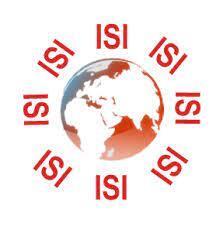The Use of Aquatic Macro-Invertebrate and Physico-Chemical Parameters for Water Quality Analysis in Wetlands of Kigali City.
DOI:
https://doi.org/10.62103/unilak.eajst.10.10.177Keywords:
Macro-invertebrate, Physico-chemical, Multimetric Macroinvertebrate Index, Biotic IndexAbstract
The research provides information on the link of the physico-chemical and aquatic biodiversity water quality analysis in the wetlands around Kigali City, Rwanda. Rugunga and Nyabugogo wetlands were chosen as our case study. The analysed samples was from Rwampala River crossing in Rugunga wetland and Nyabugogo River crossing through Nyabugogo wetland. The biological water quality based on aquatic macro-invertebrates species were correlated with physico-chemical parameters in this study. Biological water quality monitoring was conducted as it has a capability of detecting the unexpected impact on aquatic environment and this technic is very cheap and environmental friendly than the use of chemicals during analysis. The link between biological quality and chemical quality analysis of water gives a full information stating that the chemical quality analysis of the water can be replaced by biological quality analysis. Different polluting substances are now emitted to the surface water body and requires chemical monitoring. Considering the rising in the number of pollutants, this chemical monitoring is now becoming a challenge especially in the developing countries due to the cost of chemicals, analytical equipment, trained personnel, materials, repairs and energy consumption. The biological monitoring however can not eliminate the need for chemical analysis of water but both methods should be combined to provide a system which is not too expensive and which provides maximum information with efficiency. The biological monitoring could for example reduce how often a chemical test is performed. The chemical parameters determined inlude; Electrical Conductivity(EC), turbidity, salinity, pH, temperature, Dissolved Oxgyen (DO), Total Suspended Solid (TSS), Total Dissolved Solid (TDS), Chemical Oxygen Demand(COD), phosphate, Total Alkalinity(TA), fluoride, chloride, nitrite and nitrate. The results of this study indicated that the turbidity, pH, DO, TSS, TDS and total alkalinity for the analysed water samples exceed the maximum permissible limit( MPL) set by Rwanda Standard Bureau for suface water. COD for Nyabugogo River exceeds the MPL, this implies that water quality in both Rwampala and Nyabugogo Rivers are polluted. The results for biological quality based on macroinvertebrates showed that the water is polluted. The Biotic Index (BI) indicates that the pollution increases from upstreams to downstream, from moderately polluted to heavily polluted, while the Multimetric Macroinvertebrate Index (MMI) showed that the water is polluted and is of poor to bad quality. The average basic prati index indicated that the water is slightly polluted upstream and highly polluted downstream. The predominant species in the Rivers across the wetlands of Rugunga and Nyabugogo wetlands are diptera ceratopogonidae, diptera chironomidae, dipteral nonthummi-plumosus, diptera thummi-plumosus, hirudinea erpobdella, hirudinea glossiphonia, hirudinea helobdella, mollusca potamopyrgus, odonata anax and odonata aeshna, those species are pollution tolerant.








